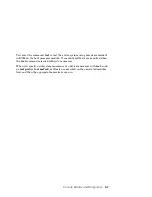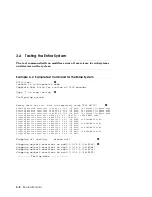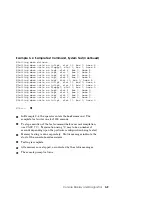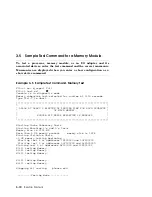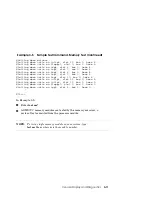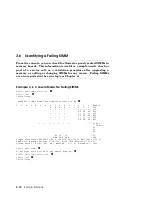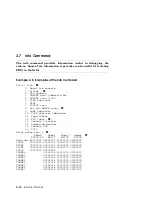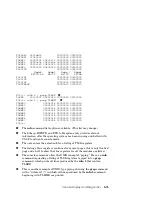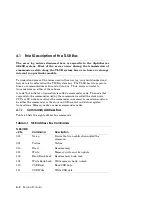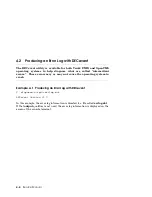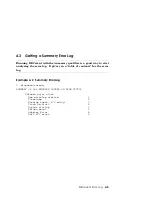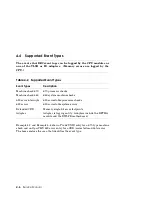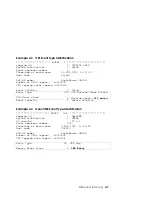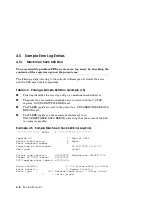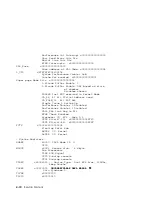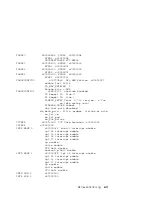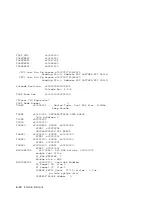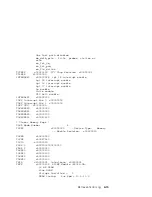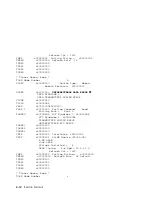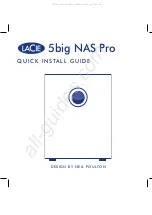
Console Display and Diagnostics
3-15
TLFADR0 0011ab00 00000000 00000000
TLFADR1 07050000 00000000 00000000
TLESR0 00000303 00400303 00000000 00000000
TLESR1 00000c0c 00400c0c 00000000 00000000
TLESR2 00006060 00406060 00000000 00000000
TLESR3 00009090 00409090 00000000 00000000
TLILID0 00000000 00000000
Node0 Node1 Node 7 Node8
KN7CG-AB MS7CC MS7CC KFTHA
TLILID1 00000000 00000000
TLILID2 00000000 00000000
TLILID3 00000000 00000000
TLCPUMASK 00000010 00000010
.
.
.
P00>>> info 5 | grep TLBER
➎
TLBER 00100000 00800000 00000000 00000000
P00>>> info 5 | grep TLMMR*
➏
TLMMR0 00008014 80000010 80000010
TLMMR1 00008014 00000000 00000000
TLMMR2 00008014 00000000 00000000
TLMMR3 00008014 00000000 00000000
TLMMR4 00008014 00000000 00000000
TLMMR5 00008014 00000000 00000000
TLMMR6 00008014 00000000 00000000
TLMMR7 00008014 00000000 00000000
P00>>>
➊
The
info
command lists options available. (This list may change.)
➋
The bitmap, HWRPB, and FRU table options only provide relevant
information after the operating system has been running and halted with
Ctrl/P to return to console mode.
➌
The user enters the selection
5
for a listing of TLSB registers.
➍
The listing of bus registers continues for several pages; this is only the first
page and a half to show that bus registers for all the modules are listed.
➎
The console commands allow the UNIX concept of “piping.” Here, an
info
command requesting a listing of TLSB registers is piped into a
grep
command, which prints all lines produced by the
info 5
that contain
TLBER.
➏
This is another example of UNIX-type piping, showing the
grep
command
with a “wildcard” (*), in which all lines produced by the
info 5
command
beginning with TLMMR are printed.







